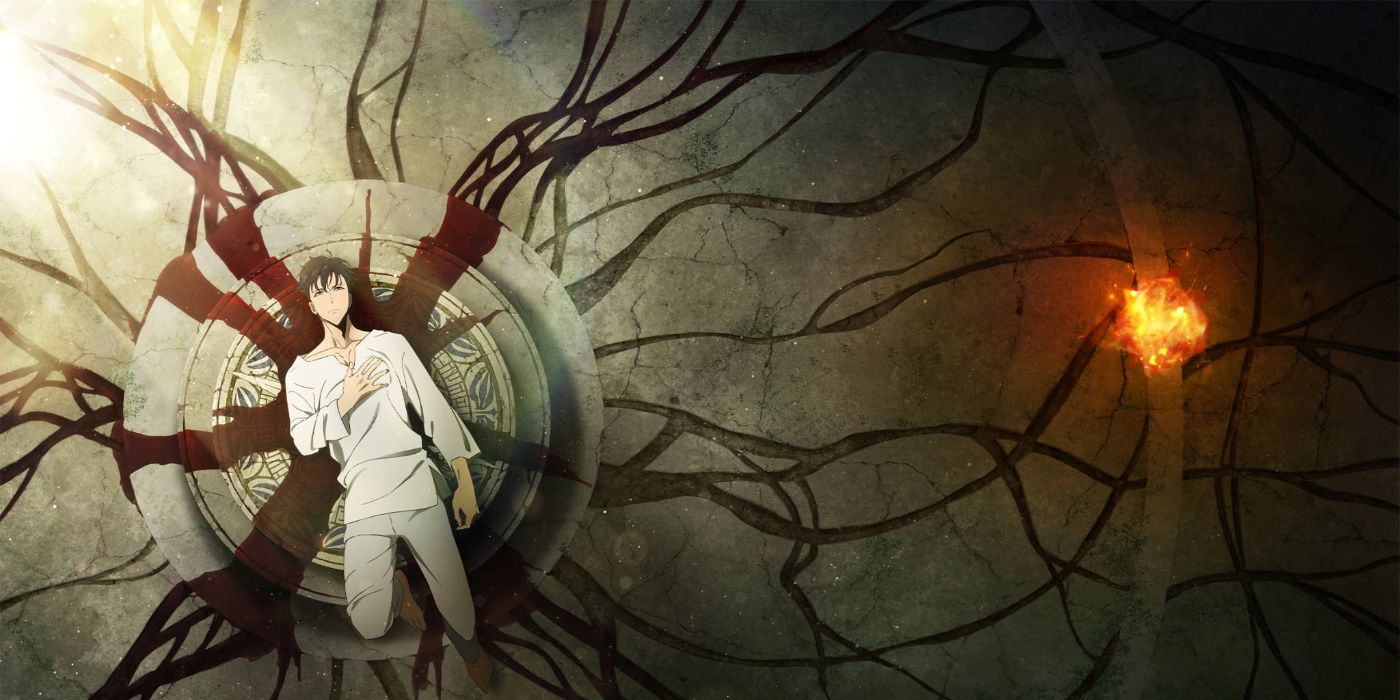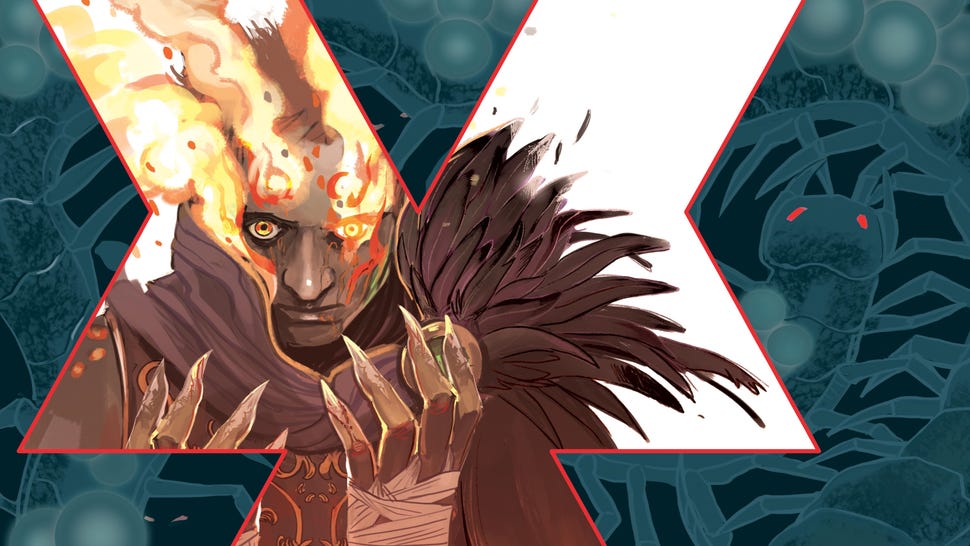Inspired by a discussion on Fabula Ultima, I embarked on a deeper dive. I revisited parts of the game and ventured beyond, exploring other avenues. One such path led me to DIE, a comic by Kieron Gillen. What piqued my interest was Gillen’s unique approach. He didn’t develop the comic first and then adapt it into a game; instead, he created them concurrently.
During my research, I stumbled upon a fantastic podcast called My First Dungeon. This show features short adventures, or “mini-campaigns,” using a variety of lesser-known RPG systems. In anticipation of a DIE: The Roleplaying Game campaign, they hosted Kieron Gillen and Grant Howitt to delve into the game. The podcast offered fascinating insights from Gillen himself, shedding light on both the story’s development and the game’s mechanics.
Dual Identities and Emotional Worldbuilding
DIE follows a group of high school friends reuniting after a twenty-year gap. Originally transported to a game world by their Dungeon Master, the specifics of their initial experience remain shrouded in mystery. Now, burdened by the weight of their past adventures, they prepare to face that world once more.
The comic’s dark and angsty tone reflects the 1990s role-playing scene. While I wasn’t part of that era firsthand, the influence was evident in the 2000s when games like Shadowrun and Vampire: The Masquerade were popular, while D&D, previously the leading choice in TTRPGs, exemplified an older aesthetic and mentality, and so was met with disdain and rejected by players.
The DIE the RPG introduces a truly unique concept: playing two characters simultaneously. The first is your real-world self, the same person who played as a teenager and now returns as an adult. It captures the nostalgia of reuniting with friends for another fantastical adventure.
However, you also create a “Paragon,” essentially a fantastical version of yourself within the game world. This isn’t a completely separate character, though; it’s more like playing yourself with a fantastical RPG profession. This dynamic is incredibly intriguing.
Another fascinating aspect, as Kieron Gillen highlights, is that the game world in DIE is shaped by the players’ emotions and thoughts, not necessarily by rigid physics. This connection between the inner world and the game’s reality influences everything from character backgrounds to challenges and the overall narrative. Moreover, a core element of the game revolves around confronting the impact of the game world on your real-world persona.
This exploration of dual identities in DIE rekindled my interest in Isekai anime, a genre that shares thematic similarities. Isekai can be seen as the modern evolution of “Portal Fantasy,” exemplified by classics like Alice in Wonderland. While Western works often explore these fantastical escapes, Isekai thrives in Japanese anime and Korean manhwa (like Solo Leveling). The term “Isekai” itself simply translates to “another world.”
Meta-Knowledge and Meta-Systems in Isekai
Sword Art Online, with its explosive popularity (both positive and negative), is considered the catalyst for the modern Isekai boom. This genre can be broadly categorized into two types: stories where characters retain a link to their real world, often through VR, and those where the transition is complete. The latter frequently involves a truck summoning ritual (or similar) as the entry point to another world. Reincarnation is another popular trope.
What truly captivates me in both DIE and Isekai narratives is the concept of “meta-knowledge.” These characters possess knowledge from their original lives, granting them a significant advantage. Whether a child enters a video game world or someone retains memories after reincarnation, this meta-knowledge becomes a powerful tool.
Many Isekai series introduces a further layer: the “meta-system” within the fantasy world. This system, often visible only to the reincarnated protagonist, resembles a game interface. The rest of the world functions as NPCs (non-player characters) unaware of these mechanics. In essence, the protagonist becomes a “player character” (PC) navigating a world perceived as a game by them alone.
Solo Leveling offers a twist on the Isekai formula. Instead of transporting the protagonist to another world, it grants him access to a system within our reality. Titled “Only I Can Level Up,” this system forms the core premise. Our protagonist is unique – the only one who can level up, gain abilities, and receive quests. This system manifests as on-screen displays, granting him meta-knowledge unavailable to the rest of humanity, whom he perceives as NPCs.

Interestingly, the original Jumanji film presents a similar concept with a two-layered Isekai approach. When Robin Williams’ character is trapped in the game world, he gains knowledge specific to that environment. Upon returning, he retains both this knowledge and the understanding of the game’s mechanics. Furthermore, as the film progresses, the children playing Jumanji begin to recognize the game’s logic influencing their real world, blurring the lines between reality and the game.
The Strategic Depiction of a Boss Battle
To cap off my Isekai exploration, I ventured into the world of Shangri-La Frontier, a VR anime that truly excels at weaving video game mechanics into the Isekai narrative. Unlike many sprawling Isekai series, Shangri-La Frontier not only references its central game but also cleverly integrates other games, even allowing characters to enter and interact with these additional virtual worlds.
One particular arc exemplifies this strength perfectly. It depicts a lengthy and challenging boss battle, complete with multiple stages, strategic learning from repeated failures, and character growth – all presented from a realistic in-game perspective. As was pointed out to me, viewers expecting a typical anime fight might find it slow. However, within the context of the series, this battle shines as a portrayal of a strategic encounter within a virtual world, not just a flashy display of power.
This deep dive into Isekai has ignited a yearning for these fantastical game systems to exist in proper games. Imagine a game where abilities are honed through practice, not predefined skill trees. Both Shangri-La Frontier and Bofuri: I Don’t Want to Get Hurt, so I’ll Max Out My Defense exemplify this concept beautifully. Characters experiment with their tools and objects, organically developing their skills. While undoubtedly a design challenge, such a system could lead to incredibly engaging gameplay experiences.
This journey through Isekai and beyond has revealed a fascinating intersection between player empowerment and narrative potential. The concept of meta-knowledge, where players leverage their real-world understanding, and the freedom of player choice within fantastical worlds hold immense possibilities for game design. As explored in titles like DIE and Solo Leveling, these elements can create a deeper connection with the characters and the world they inhabit. While replicating a full-fledged Isekai experience might be a challenge, incorporating these themes and mechanics can lead to more engaging and innovative games.
